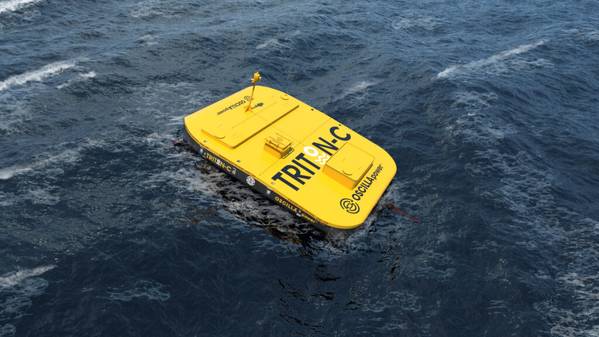
The U.S. Department of Energy (DOE) recently announced $12 million for 12 hydropower and marine energy projects as part of the Small Business Innovation Research (SBIR) and Small Business Technology Transfer (STTR) program.
These small business-led projects, selected by DOE’s Water Power Technologies Office, will drive innovation in water power technologies and contribute to the Biden administration’s goals of a carbon-free power sector by 2035 and net-zero-emissions economy by 2050.
The 12 projects include, under the theme co-development of marine energy technology at smaller scales
Aquaharmonics, Oregon, is working on co-development of a magnetic power take-off wave energy converter for an instrumentation buoy. In this project, Aquaharmonics will develop a high-power density, commercially viable, compact, and lightweight wave energy converter for powering end-user ocean observing instrumentation. their work will involve the design, manufacture, testing, and assembly of the wave energy converter and its components, as well as deployment and testing of an instrumentation buoy in the ocean.
Ocean Power Technologies, New Jersey, is working on a Modular and Scalable Small-Scale Mass-on-Spring Wave Energy Convertor (MOSWEC) PowerBuoy system for reliable powering of autonomous ocean monitoring systems. This project will involve the design, build, and ocean testing of the MOSWEC power module. The prototype is designed to power an offshore vessel monitoring system with applications in defense and security.
Oscilla Power, Washington, is working on wave-powered, radar-based ocean sensing systems. In their project, Oscilla will build and test in the ocean the MicroTriton, a small wave energy converter platform. The project will involve completing the detailed design and constructing a MicroTriton system capable of supporting and powering a radar transmitter. The system will be tested off the North Carolina coast for several months.
Triton Systems, Massachusetts, is working on wave energy Harvesting to power LiDAR buoys. This project will involve the development of a wave energy converter that can power existing LiDAR buoys, which have substantial power requirements and are used to understand site-specific physical and environmental responses to marine and other types of renewable energy development.
Under the theme, Low-Cost, User-Friendly Monitoring Tools for Marine Hydrokinetic Sites, are the following projects:
Hydronalix, Arizona, is working on “SEARCHER", a Sea Remote Controlled Hydrographic Explorer and Recorder. This project will focus on refining and demonstrating remotely controlled, low-power, robotic, and unmanned devices designed to hear, measure, image, recognize, and monitor fish, invertebrates, and other sea life at different water depths using side-scan sonar, a 360-degree camera, a fish identification tracker device, and other technologies. The project team will incorporate additional sensors and capabilities for image acquisition, analysis, and evaluation.
Integral Consulting, Washington, is working on a dashboard for marine energy site assessment and monitoring. This project will advance a wave energy resource assessment dashboard designed to inform siting, permitting, operations, and maintenance of marine energy projects. Research will focus on assimilating meteorological and oceanographic modeling products and low-cost, rapidly deployable monitoring solutions.
Marinesitu, Washington, is working on modular instrumentation and automated data processing for marine energy monitoring. This project involves developing and demonstrating modular optical camera systems, imaging sonar software, an instrument integration hub, and an automated, cloud-based data management system to create lower-cost instrumentation and user-friendly environmental monitoring tools. These tools are based on the University of Washington’s Adaptable Monitoring Package, which has been tailored for long-term monitoring at marine energy sites.
Subseasail, California, is working on ASGUARD, an "Advanced Sea Going and Underwater Autonomous Research Device". In this project, the team will continue developing ASGUARD, a fully functional, long-duration vessel with an integrated solar/electrical system and sensors. The sensing capabilities can function up to 30 meters underwater and will include an acoustic system and an electromagnetic field sensor package that can measure electric and magnetic fields created around marine energy installations.
The Office of Energy Efficiency and Renewable Energy’s (EERE’s) combined Small Business Innovation Research (SBIR) and Small Business Technology Transfer (STTR) program is among many U.S. Department of Energy (DOE) SBIR/STTR programs that provide grants to small businesses or individuals who can form a small business within the required application timeline.